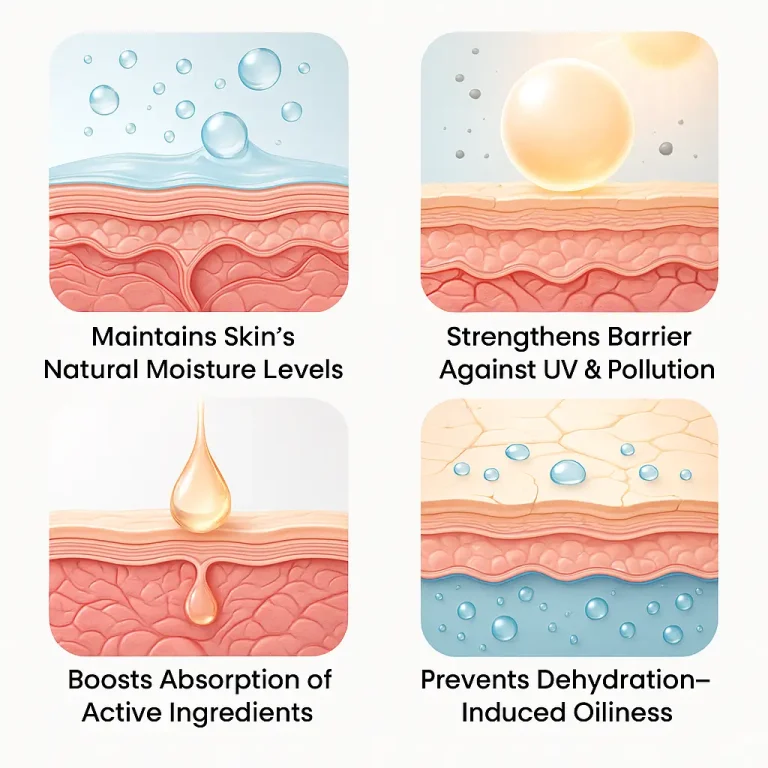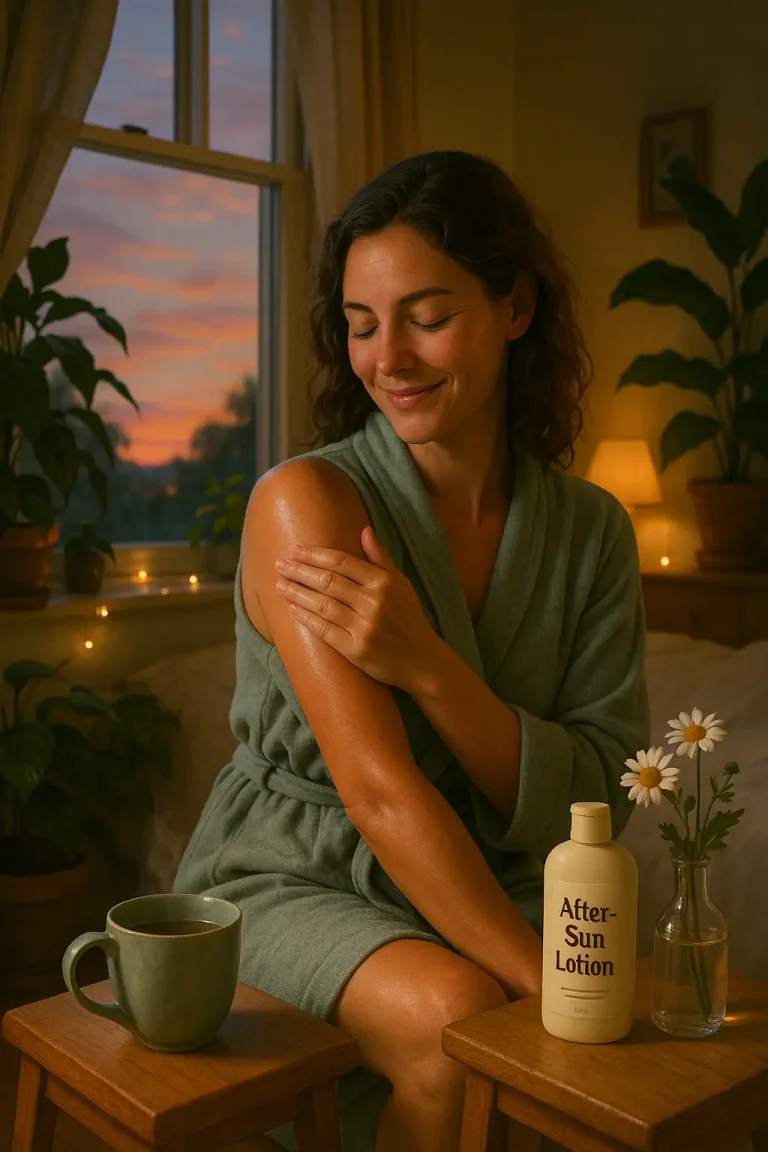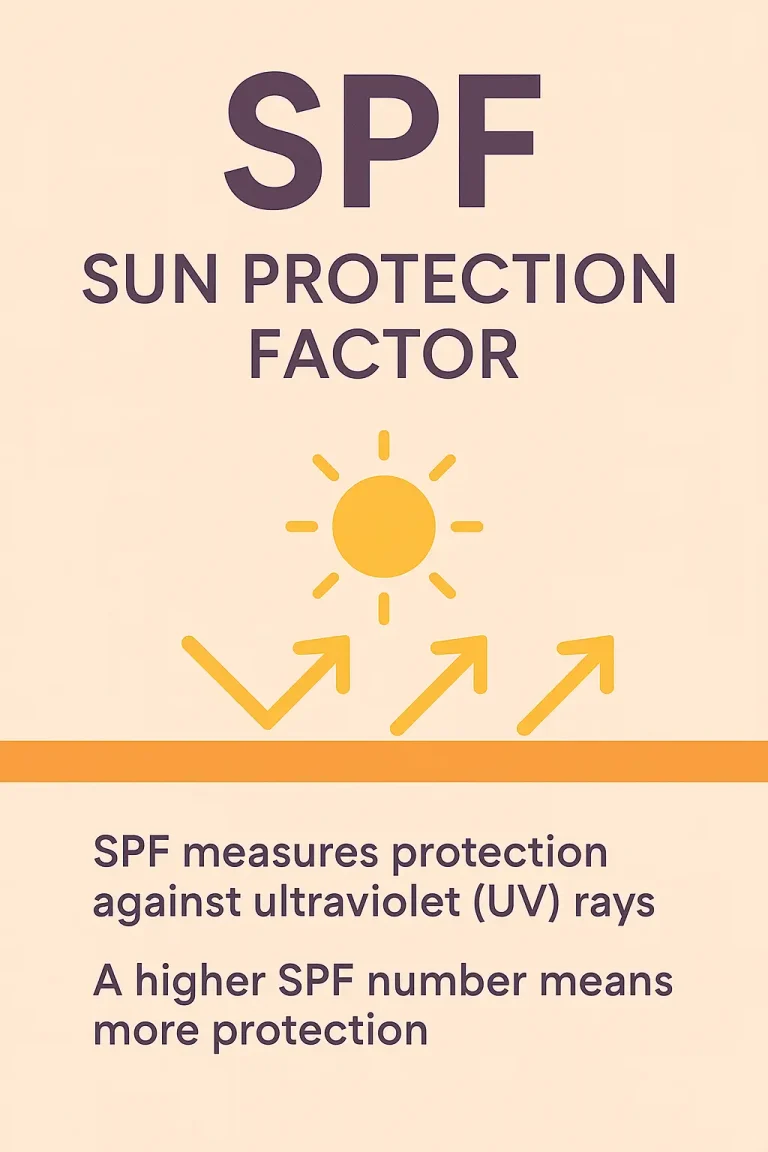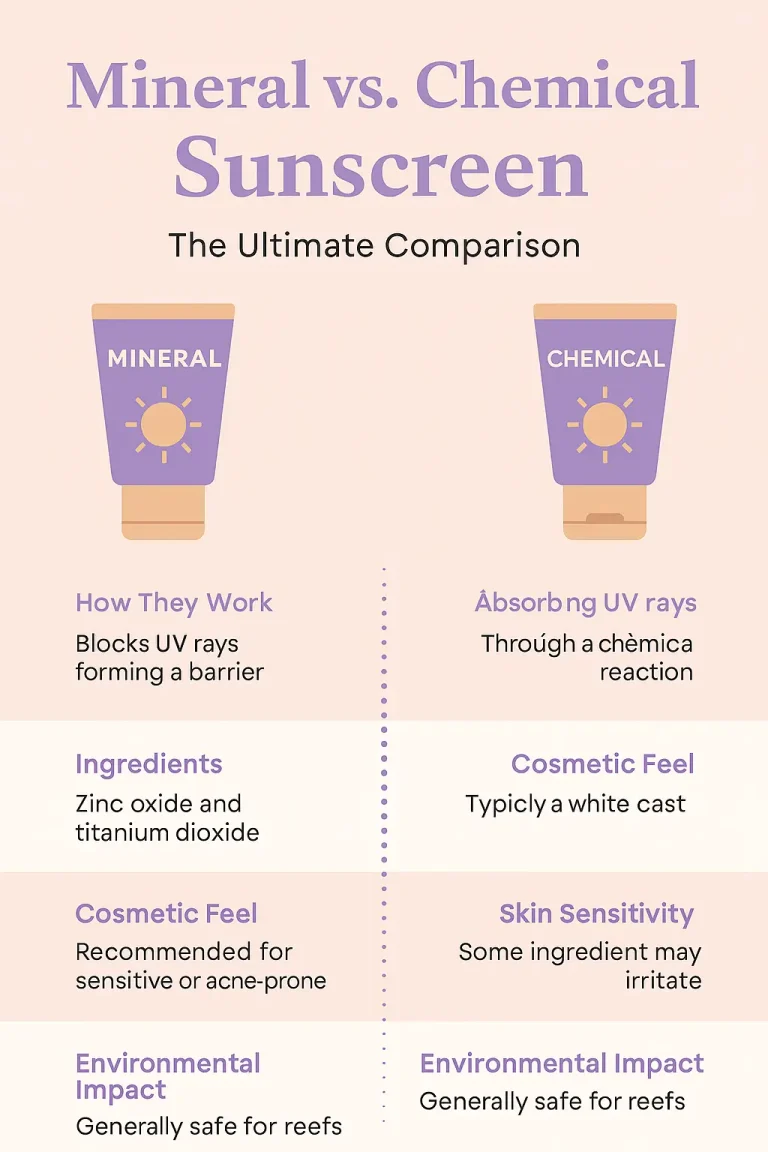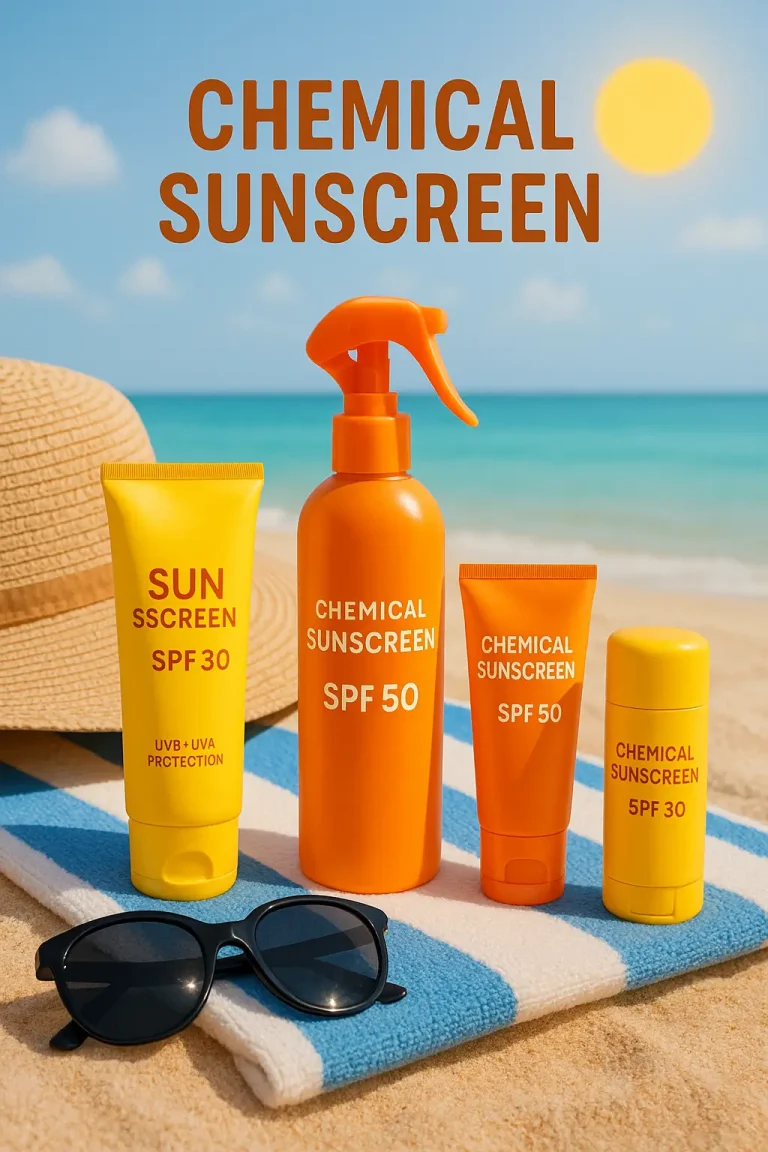How to Calm Redness After Sun Exposure: Your SOS Guide
Redness after sun exposure is the worst kind of souvenir, right? I mean, when you finally get that well-deserved vacation, it’s nearly impossible to resist those warm, tempting rays of the sun. I get it—been there! But if you overdo it (guilty as charged), your skin might start to turn red, maybe even get a bit itchy or develop a rash. That’s your skin waving a little red flag saying, “Hey, I need some help here!”
Don’t worry—this isn’t the end of the world. Your skin can heal, and with a bit of gentle care, you’ll calm that redness and feel like yourself again in no time. In this guide, I’ll walk you through the SOS steps I personally swear by to soothe red skin after sun and help it recover naturally.
Oh, and don’t forget—sun protection is key to preventing redness and sunburn in the first place. Wearing a wide-brimmed hat and protective clothing helps shield your skin from harmful rays, but your best friend should be a good sunscreen. Whether you prefer a mineral sunscreen or a chemical sunscreen, understanding the differences (mineral vs. chemical sunscreen) and choosing the right one for your skin is a game changer. Be sure to apply sunscreen properly and reapply every two hours, even on cloudy days, to help protect your skin from the sun’s harmful rays.
And if you want to treat your skin like the VIP it is, check out my After-Sun Calm Guide for a full, nurturing routine that goes beyond the basics.
Ready to calm that sun-kissed redness and give your skin some love? Let’s get started.
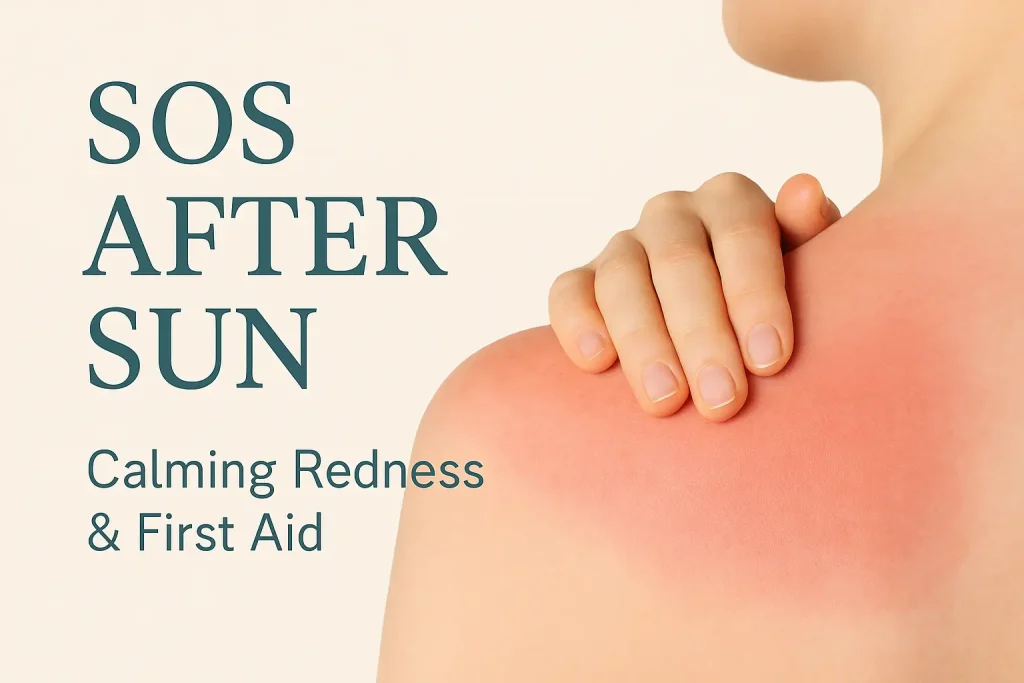
Why Does Skin Turn Red After Sun? Understanding UV Rays & How to Protect Your Skin
You might wonder why your skin turns red after sun exposure. It’s actually your body’s natural reaction to ultraviolet (UV) rays from sunlight. When your skin gets too much UV radiation—especially from UVB and UVA rays—it triggers tiny inflammation beneath the surface. This inflammation causes that familiar redness, warmth, and sometimes even an itchy rash.
This reaction is your immune system’s way of protecting and repairing damaged skin. Fair-skinned folks, sensitive skin types, and kids are often more prone to this kind of response. Some people also experience a sun allergy called polymorphous light eruption, which can cause even stronger redness and rash.
Another factor? Dehydration. Sun exposure can dry out your skin, making redness and irritation feel worse and slowing down healing.
Why Does Skin Turn Red After Sun? Understanding UV Rays & How to Protect Your Skin
So, why does your skin turn red after sun exposure? Well, it mostly comes down to UVB radiation—those sneaky rays that damage the skin cells in the top layer, called the epidermis. When these cells get hurt, your body kicks off an inflammatory response. That’s why you see redness (scientifically called erythema), feel warmth, notice swelling, and sometimes tenderness.
Here’s the cool (and a bit complicated) part: UVB causes skin cells, known as keratinocytes, to release signals that set off a chain reaction inside your skin. This leads to the production of molecules like IL-6 and TNF-α—fancy names for messengers that tell your immune system to jump into action. In fact, high UVB doses can even trigger some skin cells to self-destruct in a process called apoptosis—think of it as your skin’s way of removing damaged cells, aka “sunburn cells.”
This inflammatory wave involves chemicals like prostaglandins and leukotrienes, which regulate how blood vessels dilate and how immune cells rush to the rescue. Most of this redness and swelling peaks about 12 to 24 hours after you’ve been in the sun—hello, delayed sunburn!
There’s more: UV rays also wake up inflammasomes—little immune alarm systems inside your skin cells—that release other inflammatory signals, making the redness and swelling worse. The redness you see is basically your skin dealing with DNA damage caused by UVB and working hard to clear out damaged cells and repair itself.
These processes are well documented in scientific literature, including studies published on PMC and PubMed.
First Aid: Immediate SOS Steps to Calm Red Skin After Sun
Okay, so your skin’s feeling red, hot, and maybe a bit uncomfortable—that’s when the SOS steps come in handy. The sooner you act, the better your skin will thank you later.
- Get out of the sun and find some shade. Seriously, don’t push your luck. The sun’s rays are strongest between 10 a.m. and 4 p.m., so retreating to shade is the first way to protect your skin from more damage.
- Cool down with a refreshing peppermint mist. Peppermint’s natural cooling effect soothes inflamed skin and brings instant relief without irritation.
- Take a lukewarm shower and pat dry. Avoid hot water and scrubbing—that can irritate already damaged skin. Just be gentle and let your skin breathe.
- Hydrate your skin with calming gels or hydrosols. Aloe vera, calendula gel, and chamomile hydrosol are like little hugs for your irritated skin. They help reduce redness and support healing naturally.
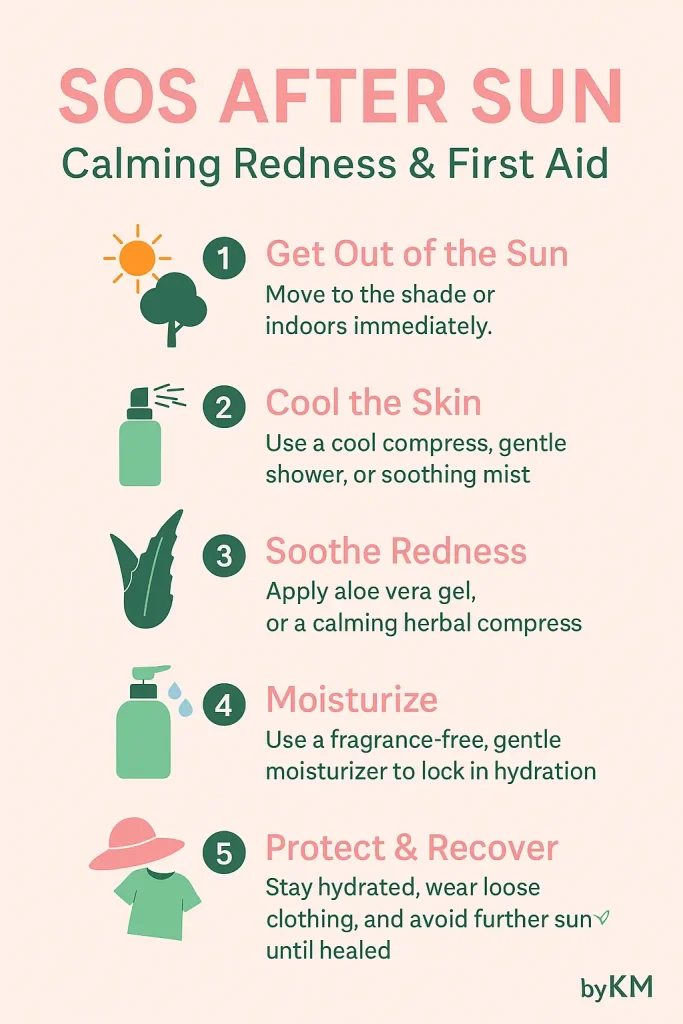
SOS DIY Recipes for Red Skin: Quick & Gentle Relief
When your skin needs some extra TLC, these DIY recipes are your best friends to calm redness after sun exposure and help your skin heal naturally:
- SOS Cream for Red Skin: A lightweight, soothing cream enriched with calming lavender and refreshing peppermint essential oils. These gentle botanicals help reduce redness and cool irritated skin, while nourishing it deeply.
- Cooling Mist with Peppermint: A refreshing, easy-to-make mist that uses peppermint’s cooling properties to soothe inflamed, red skin and provide instant relief.
- Calendula Gel: A silky, calming gel that supports skin healing and reduces redness thanks to calendula’s natural anti-inflammatory properties.
All these recipes use simple, eco-friendly ingredients you can find easily, making your after-sun care routine both effective and sustainable.
What to Avoid When Calming Red Skin After Sun
When your skin is red and sensitive after sun exposure, what you don’t do can be just as important as what you do. Here’s a quick list to keep in mind to help reduce redness after sun and soothe irritated, damaged skin:
- No scrubs or exfoliants. Your skin’s already irritated—rubbing it with harsh scrubs or chemical exfoliants will only make redness and inflammation worse.
- Avoid strong actives and direct essential oils. Ingredients like retinol, acids, or undiluted essential oils (except gentle ones like lavender in small amounts) can irritate damaged skin and trigger itchy rash or sun allergy reactions.
- Stay away from perfumed or alcohol-based products. These can dry out and inflame already sensitive skin, making it harder for your skin to heal.
- No hot showers or baths. Heat will ramp up redness and slow down healing. Stick to lukewarm water to soothe your skin.
- Skip tight or synthetic clothing. Loose, breathable fabrics help your skin cool down and avoid sweat buildup that can worsen irritation.
- Don’t go back into the sun without protection. Your skin is vulnerable—further sun exposure without sunscreen or protective clothing like a wide-brimmed hat can worsen damage and increase the risk of severe sunburn.
Following these precautions helps calm red skin after sun exposure and supports your skin’s natural healing process.
When to See a Doctor: Knowing When Your Sunburn Needs Medical Attention
Most sunburns can be treated at home with gentle care and patience, but sometimes the symptoms point to something more serious. If you experience any of the following, it’s time to seek medical advice:
- Severe sunburn with blisters. Blisters are your skin’s way of telling you it’s seriously damaged and needs extra care.
- High fever, chills, or vomiting. These can be signs of heat exhaustion or sun poisoning, which require prompt attention.
- Confusion or dizziness. If you feel disoriented or weak, it’s important to get checked out.
- Severe pain or swelling that doesn’t improve. Persistent discomfort may indicate infection or deeper skin damage.
- If your sunburn symptoms worsen without treatment or don’t start to improve within a few days, it’s best to consult a healthcare professional or visit a clinic.
Remember, timely care can help prevent complications like skin infections or more severe damage. If you have concerns about your sunburn, don’t hesitate to reach out to a dermatologist or healthcare provider.
FAQ: Your Top Questions About Redness, Rash & Sunburn After Sun Exposure
1. Why am I so red after being in the sun?
When you spend time in the sun, your skin reacts to ultraviolet (UV) rays by increasing blood flow to protect and repair itself. This causes the redness you see—scientifically called erythema. It’s a natural inflammatory response triggered mostly by UVB rays damaging skin cells. So, that bright red color? It’s your skin waving a little red flag that it needs some TLC.
2. How to reduce redness after sun exposure?
The key is to calm and soothe your skin gently. Cooling peppermint mists, aloe vera, and calendula gels are fantastic natural helpers. Avoid harsh scrubs, hot water, and strong chemicals. Also, stay out of the sun while your skin heals and always wear protective clothing and sunscreen when you head outdoors again.
3. How long does redness from the sun last?
Redness usually peaks about 12 to 24 hours after sun exposure and can last a few days, depending on the severity. With gentle care, your skin should start to calm and heal within 3 to 5 days. If redness persists or worsens, it might be a sign of more severe sunburn or another reaction, and you should consider seeing a healthcare professional.
4. What is the difference between redness, sunrash, and sunburn?
Great question!
- Redness after sun exposure is usually mild inflammation and increased blood flow—your skin’s normal response to UV rays.
- Sunrash (also called polymorphous light eruption) is an allergic-like reaction to sunlight that causes itchy red bumps or patches, often appearing hours or days after sun exposure.
- Sunburn is more serious—it’s actual damage to your skin cells caused mainly by UVB rays, leading to redness, pain, swelling, sometimes blisters, and peeling. It’s an inflammatory response that needs gentle care to heal properly.
5. When should I see a doctor for sunburn or rash?
If you notice severe symptoms like blisters, fever, chills, vomiting, confusion, or if your redness and rash worsen or don’t improve within a few days, it’s time to seek medical advice. Also, if you’re unsure about your skin’s reaction or have concerns about medication or allergies, a healthcare professional or dermatologist can help guide your care.

Conclusion: Calm, Care, and Protect Your Skin After Sun
Dealing with redness after sun exposure can feel frustrating, but remember—your skin is smart and resilient. With gentle care, cooling ingredients, and a little patience, you can calm that red, irritated skin and help it heal beautifully.
Don’t forget, prevention is just as important as aftercare. Wearing protective clothing, a wide-brimmed hat, and choosing the right sunscreen can make all the difference in avoiding redness, rash, or even more severe sunburn. If you’re curious about how climate change affects your skin and what extra precautions to take, check out my detailed post.
And when it comes to soothing irritated skin, nature has your back. Herbs like peppermint, chamomile, and calendula are amazing allies—learn more about these gentle, cooling herbs in my guide.
When your skin feels ready, continue your after-sun routine with nurturing creams and hydrating oils—check out my After-Sun Calm Guide for easy, natural recipes that love your skin as much as you do.
Got your own tips or stories about sun care? I’d love to hear how you calm and protect your skin—drop a comment or reach out anytime!
Kristina

